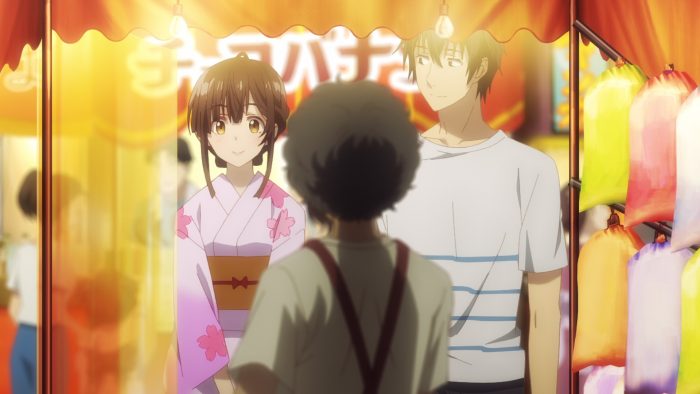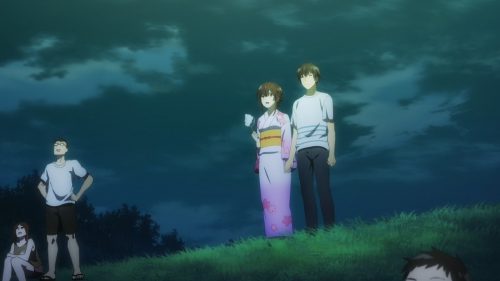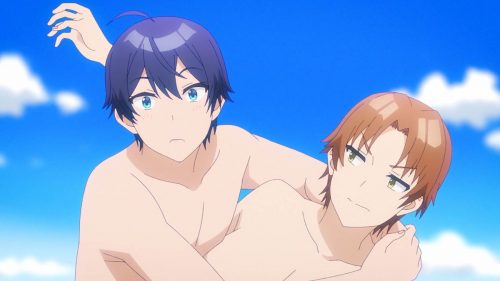
Spring 2021 has been rather interesting, particularly in the emphasis on romance and slice of life. Titles like Hige wo Soru, Soshite Joshikousei wo Hirou (Higehiro: After Being Rejected, I Shaved and Took in a High School Runaway), Ijiranaide, Nagatoro-san! (Don’t Toy With Me, Miss Nagatoro!) and Fumetsu no Anata e (To Your Eternity) have all been varying degrees of outstanding from week to week, but we’re narrowing the focus down to just romance — what are the shows this season doing something different to anything we’ve ever seen? The answer obviously lies in the overarching theme of trope subversion!
Romance titles this season have been committed to reinventing the wheel in certain aspects, fully adopting the opposite of the saying “If it ain’t broke, don’t fix it”. Except, in the context of anime tropes, a lot of things are most definitely broke, worn down, and in need of fixing. How do shows like Higehiro, Nagatoro-san and Osananajimi ga Zettai ni Makenai Love Comedy (Osamake: Romcom Where The Childhood Friend Won’t Lose) attempt to make their presence through subversion? Let’s zoom in and pick apart the basic ideas behind each show!
“Hi, Nice to Meet You, Move In With Me” – Higehiro

One of the shows that bends its resident tropes is none other than the incredibly stressful, oddly wholesome slice of life series, Higehiro. Sporting a well-explored trope where male protagonists find themselves having to live with gorgeous female characters (or robots, or mythological creatures, or dolls, whatever) who somehow have nowhere else to go. This particular set-up always has romantic undertones, so Higehiro seemed to naturally fall into that same trajectory in the context of an age-gap relationship. However, ten episodes aired and while it did look precarious at times, Higehiro didn’t explore these tropes in the way we’d expect. There were barely any humorous (or annoying) misunderstandings, and the main pair seem to have developed a codependent relationship that threatens to go the beaten and dusty road of romance, but hasn’t gone that way so far. Will Yoshida and Sayu eventually go the accursed route, or will Higehiro continue to be a title that does things differently? Find out on the next Higehiro episode, because we’re clear of the manga at this point!
What If the Childhood Friend Didn’t Lose?

The next trope-bender is pretty obvious! It’s Osananajimi ga Zettai ni Makenai Love Comedy (Osamake: Romcom Where the Childhood Friend Won’t Lose), the series whose title also doubles as a misleading synopsis. While the point of the show is to bend the unwritten rule that childhood friends of romance protagonists never get to have the romantic relationship they want with the main character. This time, the whole show is set up to make the childhood friend win the affects of the protagonist, but what you’ll soon realize is how the show actually bamboozles you by making both romantic prospects of the protagonist his bona fide childhood friend! Great twist, followed up by not-so-great story progression or characters, but a really interesting trope subversion plot nonetheless.
Did Somebody Order a Sadodere?

Not a plot subversion per se, but the manic pixie dream girl archetype has seen various permutations in the forms of Suzumiya Haruhi, Uzaki-chan, and now, the season’s golden girl, Nagatoro Hayase from Ijiranaide, Nagatoro-san! (Don’t Toy With Me, Miss Nagatoro!)! This evil, conniving, sadistic high schooler gets her kicks from relentlessly teasing and berating a boy one year her senior! While we’ve seen various iterations of energetic and cheery high school girls taking a poor high school boy on various ridiculous adventures, Nagatoro-san is perhaps the first time the focal point is the sadodere archetype, rather than the masochist. The anime is also unique for not featuring a straight-up masochist to parallel their sadodere, but rather someone who’d rather not be belittled or made fun of.
Yet another unique element is how proportional the teasing is from Nagatoro for somebody their age — she’s not setting his pants on fire or giving him anthrax as a joke, but she’s consistently going for his insecurities while simultaneously trying to bring him out of his shell. It’s unmistakable the level of affection developing between the two. The thing that makes this show one of the season’s best has to be the wholesome moments that punctuate all the banter, bullying, and total nonsense that Nagatoro subjects Naoto to. These moments of wholesomeness would be ruined by ambitious attempts at humour in any other show; however, Nagatoro-san knows how to drop the mic and build a ridiculous, yet strangely organic and heartwarming relationship between two characters on opposite ends of the popularity hierarchy.
Final Thoughts
The shows we’ve mentioned from this season should be celebrated for trying to do something different with the romance genre. Some didn’t go quite as well as they could have, but each of these shows is an attempt at pushing romance in anime just one level further. There are other slice of life and romance shows this season, but of the crop of anime out in Spring 2021, the three that we’ve mentioned are going to be the most memorable of the romance genre and slice of life genres. Do you think there are other slice of life and romance shows trying to break the mold? Drop a comment below and tell us all about them!
Recommended Post
Don't Miss The Best Romance Anime of Spring 2021!
Recommended Post
Best Romance Anime of Winter 2022
Recommended Post





